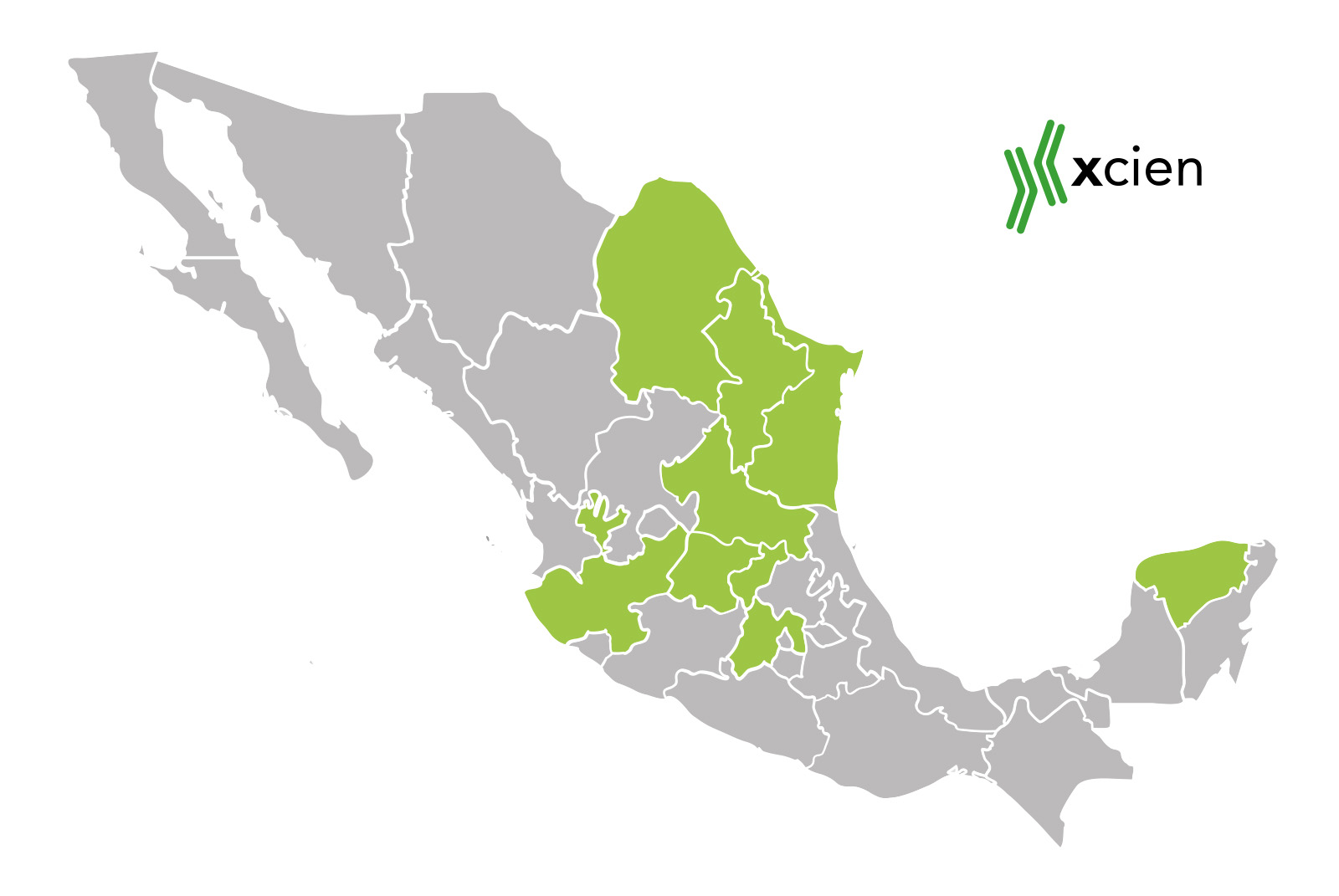Challenge: XCIEN’s customers are demanding more from their network to enable new applications. XCIEN is also looking for a wireless solution to deploy in areas where competition from fiber is on the rise. All of this must occur in areas with heavy interference from existing wireless networks.
Solution: With G1’s fiber-class next-generation wireless, XCIEN is able to successfully compete against fiber with multi-hundred megabits of service, even in high interference locations.
Results: XCIEN enables their customers to run any application, with no compromises in quality or performance. Links have also been tested with up to 200 Mbps download speeds in heavily congested RF interference areas.
Speed: Despite very high interference levels, the links supported 200+ Mbps download speeds and 50 Mbps uploads.
Distance: The network is comprised of links from 1 km to 5 km.
Subscribers: With support for up to 1,000 users per G1 tower, XCIEN can support very dense urban deployments.
Visibility: Many links are nLoS and NLoS due to trees and buildings.
Radio Planning: From k=2 to k=1.
XCIEN, the largest wireless internet service provider in Mexico, plans to utilize Gigabit 1 (G1) — Tarana’s breakthrough broadband platform that has introduced the next generation of fixed wireless access (ngFWA) — in previously hard-to-reach, rural areas where fiber is not economically viable. XCIEN also plans to use G1 in competition with fiber offerings in urban zones where G1’s deployment speed and high throughput make it a compelling alternative.
Founded in 1999, XCIEN specializes in high-quality telecommunications services on the peripheries of urban cities and remote areas with access difficulties. They currently serve more than 3,000 businesses across 12 states of Mexico, and have recently joined a strategic alliance with Luminet Wan to enable even wider implementation of their broadband services. XCIEN was also the first to promote the Association of Wireless Internet Providers in Mexico, a foundation that today brings together more than 150 companies.
The Next Generation of FWA
The recent increase in remote work, education, and healthcare has created a strong incentive for XCIEN to broaden their target market, now including more residential areas. XCIEN Chief Operating Officer, Jesús Cañamar, said, “Fast, dependable internet is not only crucial for the businesses we serve, but also the neighborhoods where home offices and ‘classrooms’ are ever more present. With G1’s long reach and ease of deployment, we can provide quality service to many more of these homes, and more quickly.”
G1 is currently deployed in Monterrey and Saltillo, Mexico with planned expansion throughout XCIEN’s footprint.
New Applications, New Bandwidth Requirements
With an increase in businesses, remote workers, and distance learners, there is a demand for ever greater bandwidth. Businesses are typically heavy data users both in downlink and uplink. Remote workers and distance learners need both downlink and uplink bandwidth for applications, such as video conferencing, which adds to rising bandwidth demands. As new applications, such as virtual reality, become more popular, these needs will only increase.
High-speed broadband at these levels can be difficult for legacy fixed-wireless access equipment to support. Wi-Fi-based FWA typically offers a few hundred megabits of capacity per sector — this is not nearly enough to support services in dense urban areas where dozens, or even a hundred or more, subscribers could be supported by a single sector. 3GPP-based FWA systems also lack high sector capacity. In addition, they suffer from asymmetrical throughput where the uplink is far more constrained than the downlink. This makes supporting applications with heavy uplink requirements, such as video, difficult.
Getting Around Obstacles and Interference
One problem the company faced with its previous vendor was performance in heavy RF interference, common in urban centers. Finding unused, interference-free, unlicensed 5 GHz spectrum in these locations was virtually impossible, which is where G1’s breakthroughs in interference cancellation — a hallmark of ngFWA — can make all of the difference between a usable link and no link at all.
Another problem that arises, particularly in dense urban areas, is the proliferation of non-line-of-sight links. Wi-Fi-based FWA systems are typically designed for line-of-sight links only, which leaves them at a severe disadvantage in areas with many buildings, foliage, and other obstacles. Only ngFWA products, such as Tarana’s G1, which is explicitly designed for non-line-of-sight operation, can overcome this difficult challenge.
The following graph shows the interference on a link in a highly congested area. Despite very high interference levels, this link still supported 200 Mbps download speeds and 50 Mbps uploads.

“With Tarana, we can deploy services that require a large amount of bandwidth on 5 GHz at places where our market has limited line-of-sight from our towers,” says Mr. David Martínez, Director General of XCIEN.
Fiber-Class Wireless is a Key Competitive Edge
When faced with rising customer demand for broadband and competition, XCIEN realized they needed a solution that could compete with fiber at favorable economics and time to deploy. Only Tarana G1’s fiber-class next-generation fixed wireless access meets this need. With G1, XCIEN can grow their grow their customer base and compete.
“Before Tarana, we had only a limited ability to counter markets where fiber was touted as the only solution,” Mr. Martínez adds. But fiber doesn’t always make economic sense and that is another reason why XCIEN turned to Tarana’s next-generation FWA technology for help.
With G1’s breakthrough next-generation fixed-wireless access, XCIEN was able to rapidly deploy in target areas, increase connection reliability, and double the speed of the services they support, oftentimes in harsh RF conditions with heavy interference in dense urban centers.
